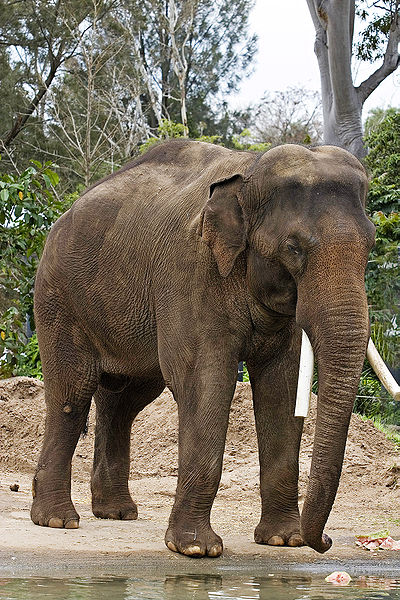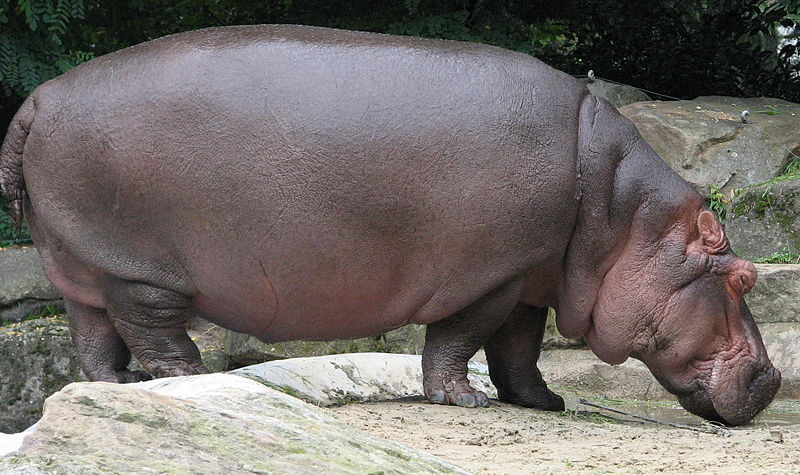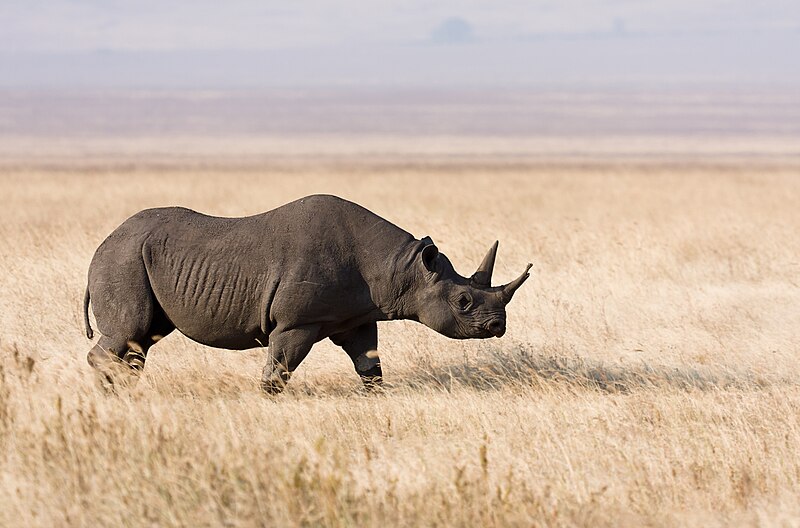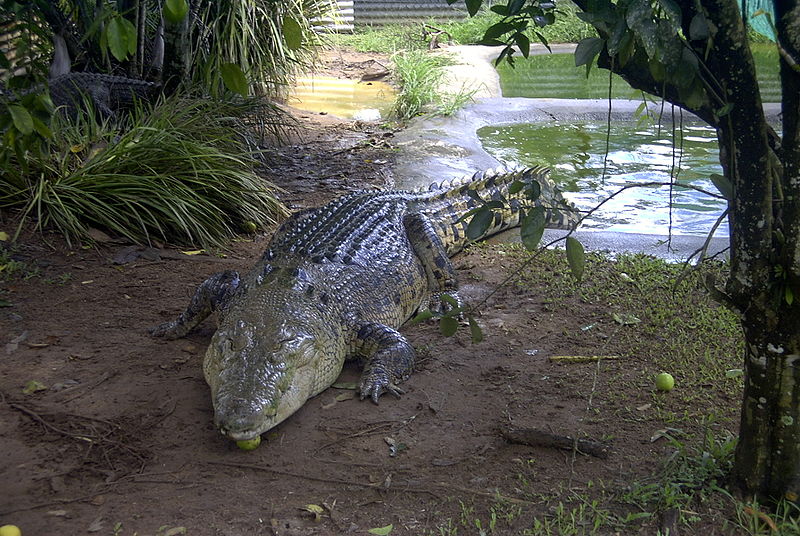Roaming around on the Earth are some truly enormous animals. Some that you wont be able to get a grasp on until you see them in person. Now to look at, there may beanimals you feel should have appeared on this list or the ordering of this list should have been different, but from the research I've done, the animals that appear here do seem to be the heaviest land mammals on the planet.
Because it's difficult to get a completely accurate weight for all of these animals, we can't ask an elephant or rhino to stand still on a set of scales, there may be slight inaccuracies with the figures. However, they should all be within a close range of the real weight, research done has been able to get some remarkable results about these mammals.
Because it's difficult to get a completely accurate weight for all of these animals, we can't ask an elephant or rhino to stand still on a set of scales, there may be slight inaccuracies with the figures. However, they should all be within a close range of the real weight, research done has been able to get some remarkable results about these mammals.
1. African Elephant
The African Elephant is the largest and heaviest land mammal on Earth. It has enormous ears that it uses for heat loss, and huge tree trunks for legs, which isn't surprising when they have to uphold their huge body.
Males stand at a staggering 10-13 ft at the shoulder, and while they may seem like gentle giants, people who know elephants will know not to get to close to one, they have been known to charge people, especially with young, and can bring down trees with ease.
Males stand at a staggering 10-13 ft at the shoulder, and while they may seem like gentle giants, people who know elephants will know not to get to close to one, they have been known to charge people, especially with young, and can bring down trees with ease.
2. Asian Elephant
Mass: 4,500 - 5,400 kg
The Asian elephant is the second heaviest land mammal in the world, behind its relative theAfrican elephant. In the last 26 years the Asian elephant has been considered to be an endangered animal, as population levels have decreased by 50% in the last 60-75 years. There was an exceptionally large bull Asian elephant living in captivity which weighed a huge 6,590 kg!
The trunk of this animal serves as an arm for the elephant and contains as many as 60,000 muscles, allowing for a surprisingly amount of dexterity.
3. White Rhinoceros
Mass: 1,360 - 3630 kg
The white rhinoceros is the largest of the five species of rhinoceros, and is one of the non-extinct species. The largest recorded white rhinoceros was a male weighing 4,500 kg.
The front horn on it's snout, the larger of its horns, averages at around 90cm but can grow to 150 cm (which is just under 5ft).
The front horn on it's snout, the larger of its horns, averages at around 90cm but can grow to 150 cm (which is just under 5ft).
The northern white rhinoceros is much rarer than the southern white rhinoceros, with all of the species now in captivity.
4. Hippopotamus
Mass: 1,500 - 1800 kg
The hippopotamus, or simply the hippo, is the third largest animal to appear on this list, behindelephant and rhinoceros. The hippopotamus is often regarded as the most dangerous animal in Africa. It may not look as ferocious as a lion but have been known to kill people who gets too close, that includes boats which they are able to throw over and sink. They are one of the most aggressive animals in the world.
Crocodiles, lions, hyenas, and other of Africa's big predators know better than to mess with a hippopotamus. They have been recorded to run up to 19mph.
Crocodiles, lions, hyenas, and other of Africa's big predators know better than to mess with a hippopotamus. They have been recorded to run up to 19mph.
The hippo is a threatened species due to poaching for their ivory teeth and habitat loss.
5. Walrus
Mass: 800 - 1,700 kg
The walrus is a large marine mammal that lives in the North Pole, Arctic Ocean, and Arctic seas of the Northern Hemisphere. There notoriously recognizable tusks are the walrus' trademark, and can grow up to a staggering one meter. Male tusks are slightly longer and thicker than females and are used for fighting to exert dominance.
The walrus' thick blubber (up to 15cm thick) keeps it warm throughout the year, in or out of the water. They prefer shallow waters where they spend time looking for mollusks to eat. While they may be slow and clumsy on land, once in the water these animals are as graceful as a fairy.
6. Giraffe
Mass: 830 - 1,600 kg
The giraffe is the tallest terrestrial animal on the planet which stands at 16-20 ft on average. They are native to Africa, preferring Savannah's, open woodlands, and grasslands. There top predator is the lion, but other animals such as the spotted hyena, the leopard, and the wild dog, will hunt young giraffe.
Male giraffes will fight each other using their necks as unusual weapons, this is how they decide upon hierarchy within the group.
Some subspecies have been classified as endangered, however, the overall conservational status of the species is of least concern (International Union for Conservation of Nature).
7. Gaur
Mass: 650 - 1,600 kg
The gaur is a large bovine that is native to South Asia and Southeast Asia. The gaur is a huge animalstanding at an impressive 5.4 - 7.2 ft at the shoulder. They are very solidly built and some bulls can weigh to 1,600 kg. The gaurs horns can grow from 60 -115 cm in length, both genders male and female grow horns. Out of all the wild cattle in the world, they are the heaviest and most powerful.
8. Black Rhinoceros
Mass: 800 - 1,400 kg
The black rhinoceros is a species of rhinoceros that is native to the eastern and central areas of Africa. The black rhino is more of a grey/brown colour despite being referred to as black. The species is classified as critically endangered, and the Western black rhinoceros was declared extinct in 2011.
Males stand at 4.3 - 5.9 ft at the shoulder and are surprisingly fast for their size, capable of reaching speeds of up to 35 mph.
9. Wild Asian Water Buffalo
Mass: 700 - 1200kg
The wild Asian water buffalo is the second-largest species of wild bovid (behind the gaur) and deemed as an endangered animal with maybe only as few as 3,400 left in the world. They have a shoulder height of 150-190 cm (4.9-6.2 ft). They enjoy to live in wet grasslands, swamps and densely vegetated river valleys. Herd sizes may vary, one may be 30 while another may be 500. The maximum recorded life span of a Asian water buffalo in the wild is 25 years.
10. Saltwater Crocodile
Mass: 409 - 1000 kg
The saltwater crocodile is the largest of all reptiles, living in Northern Australia, Southeast Asia to the eastern coast of India. When they are newly hatched, saltwater crocodiles are 25-30 cm in length, when they reach adulthood, an adult male can be 13-20 ft. The saltwater crocodile can swim 15-18 mph but most of the time will only move at around 2-3 mph.
They will eat any animal within its range, using its huge jaw muscles to latch onto prey, then dragging them into the water where they will violently spin - drowning the prey whilst ripping bite-able chunks off of it. In 2011 a large saltwater crocodile killed a Bengal tiger when the tiger was crossing a river – the only known attack of this kind.










कोई टिप्पणी नहीं:
एक टिप्पणी भेजें